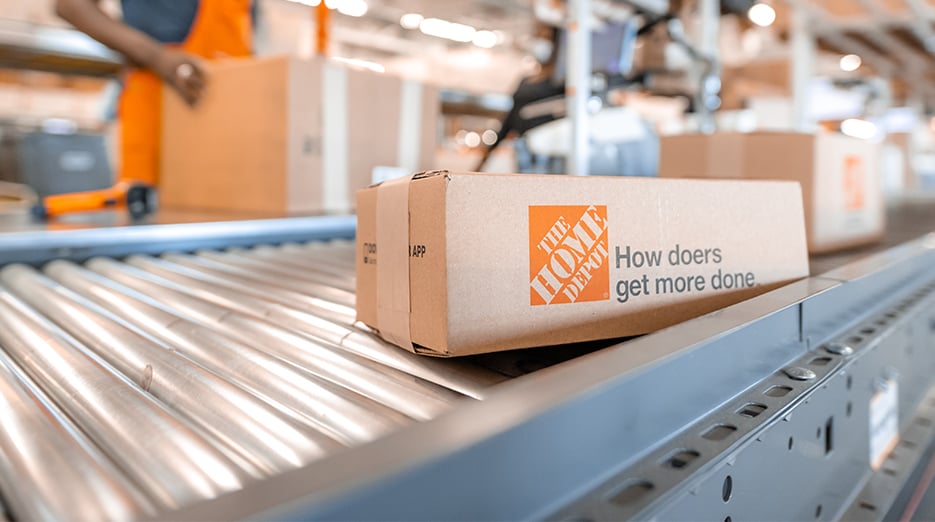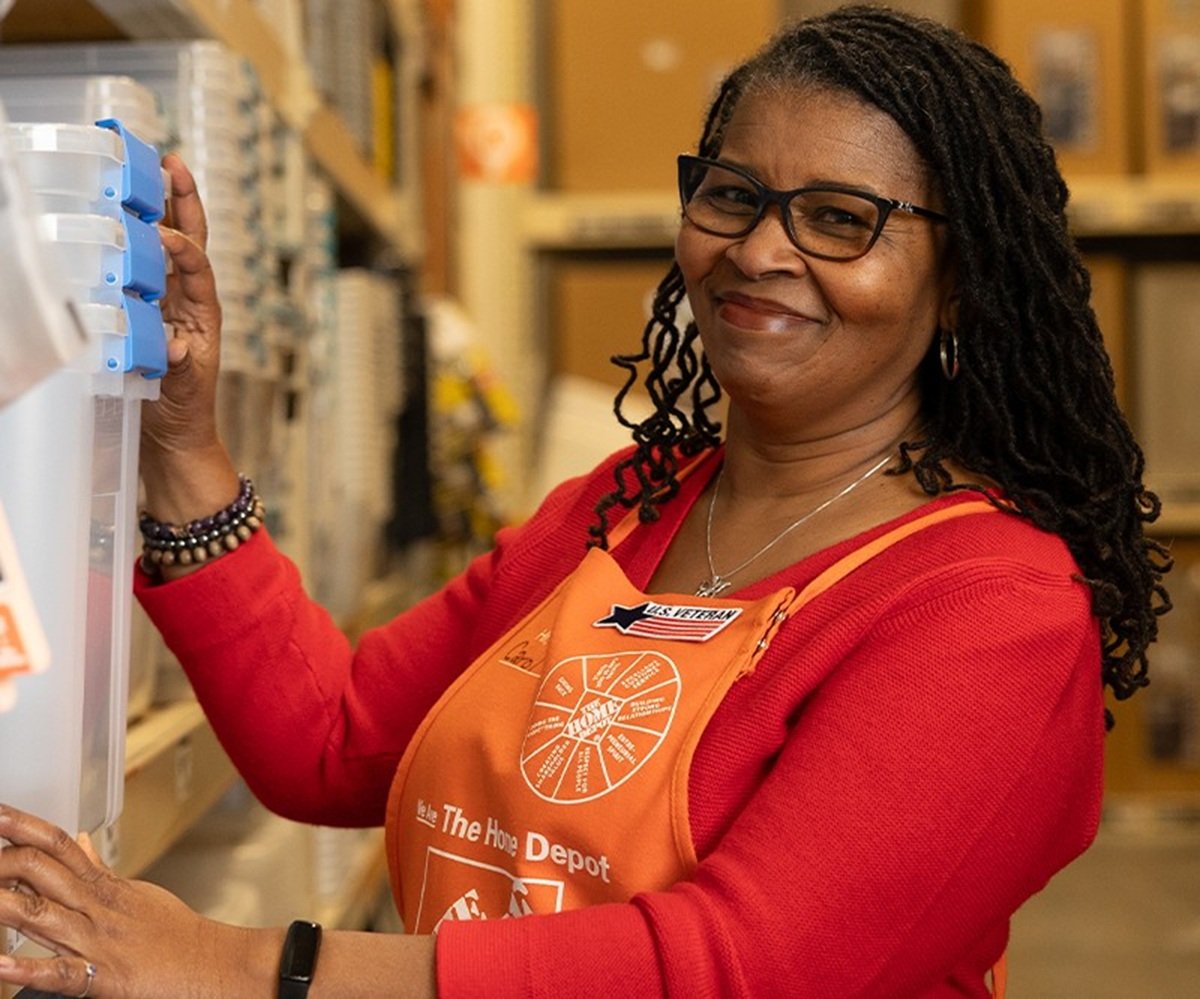
Image source: Home Depot.
Home Depot (HD 0.41%) reported plenty of good news for shareholders at its last quarterly check-in. Sales are growing, the retailer is seeing strong demand in the profitable professional-market niche, and e-commerce initiatives are keeping online rivals at bay.
Yet the stock has underperformed the broader market so far in 2016 and also over the last 12 months. Sure, its long-term gains have been spectacular. But the latest dip could stretch on -- especially if Home Depot sees challenges in the key areas outlined below.
Housing market slowdown
The biggest risk to shareholders is that the home improvement market could begin contracting again. The industry has posted slow but steady gains for six straight years -- with investments into homes surging from a recession-low annual pace of $365 billion to $700 billion now.

Image source: Federal Reserve Economic Data.
Home Depot has captured more than its fair share of that rebound as its sales growth and profitability gains have outpaced those of Lowe's (LOW +0.03%) significantly. Yet management admits that the company's financial performance is highly leveraged to the stability of the housing, construction, and home improvement markets.
Home Depot's latest thinking on these industries is bullish. Despite a recent slowdown in overall economic growth, housing market fundamentals such as home prices and household-formation rates remain healthy. In addition, nearly 50% of homes are over 40 years old right now, compared to 35% a decade ago. That aging housing stock points to years of additional growth in the industry. However, economic conditions change quickly, and a contracting industry would threaten management's medium-term goal to reach $100 billion of annual revenue by 2018.
Traffic jam
Home Depot is happy with the size of its store base. In fact, the retailer hasn't added a new location in the U.S. in over three years. Lowe's, in contrast, plans to tack 45 stores on to its footprint this year.
That strategy gives Home Depot more cash to plow into initiatives like e-commerce, but it also puts pressure on existing locations to deliver almost all of the sales gains. So far the stores have stepped up to that challenge: Home Depot enjoyed back-to-back years of 4% customer traffic growth in 2015 and 2014.
In contrast, 2016 isn't off to as strong a start, with customer traffic levels up just 3% over the last six months. The good news is that higher average spending, thanks to Home Depot's success at winning share in the professional-contractor category, is taking some of the sting away from slightly lower traffic growth. If the home improvement aisles don't keep getting busier with each passing season, though, investors will have reasons to worry about where the sales gains will come from.
Online stumbles
E-commerce was worth 5.6% of Home Depot's business last quarter -- up from 5.3% at the end of 2015 and 3.5% at the end of 2013. Success in this area is rare for national retailers. Target (TGT 0.95%), for example, gets just over 3% of sales from digital sources despite years of work aiming to lead in that category.
Home Depot can't just sit still here, though, since online rivals are playing the long game. Their lower cost structures always threaten its pricing model, while a broader inventory selection could erode the product authority that executives see as the company's key competitive advantage. After all, there are good reasons that e-commerce has soared to over 8% of all retailing -- up from 3% a decade ago.

Home Depot's connected retailing strategy. Image source: Home Depot investor presentation.
Management's response to these challenges so far has been to neutralize them by building out its online capabilities as quickly as possible. New shipping centers last year brought 90% of the U.S. public to within two business days of home delivery, and the retailer is currently adding "buy online, deliver from store" to its arsenal that already includes delivery to homes or local stores from online fulfillment centers. Home Depot needs these investments to keep its customers within its own ecosystem, which means that, in this fight, it will have to stay one step ahead of online competitors that have structural advantages.








